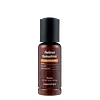What's inside
What's inside
 Key Ingredients
Key Ingredients

 Benefits
Benefits

 Concerns
Concerns

No concerns
 Ingredients Side-by-side
Ingredients Side-by-side

Water
Skin ConditioningButylene Glycol
HumectantGlycerin
Humectant1,2-Hexanediol
Skin ConditioningAluminum Starch Octenylsuccinate
AbsorbentBakuchiol
AntimicrobialHydrolyzed Sodium Hyaluronate
Skin ConditioningSodium Hyaluronate
HumectantHyaluronic Acid
HumectantSodium Hyaluronate Crosspolymer
HumectantPotassium Hyaluronate
Skin ConditioningHydroxypropyltrimonium Hyaluronate
Hydrolyzed Hyaluronic Acid
HumectantSodium Acetylated Hyaluronate
HumectantRosa Damascena Flower Water
MaskingXanthan Gum
EmulsifyingTromethamine
BufferingCaprylic/Capric Triglyceride
MaskingCarbomer
Emulsion StabilisingAcrylates/C10-30 Alkyl Acrylate Crosspolymer
Emulsion StabilisingAdenosine
Skin ConditioningGlyceryl Acrylate/Acrylic Acid Copolymer
HumectantHydrogenated Lecithin
EmulsifyingDisodium EDTA
Methyl Methacrylate Crosspolymer
Retinol
Skin ConditioningInulin Lauryl Carbamate
Emulsion StabilisingHydroxydecyl Ubiquinone
AntioxidantCholesterol
EmollientTocopheryl Acetate
AntioxidantBHT
AntioxidantVigna Radiata Seed Extract
Skin ConditioningAvena Sativa Kernel Extract
AbrasiveWater, Butylene Glycol, Glycerin, 1,2-Hexanediol, Aluminum Starch Octenylsuccinate, Bakuchiol, Hydrolyzed Sodium Hyaluronate, Sodium Hyaluronate, Hyaluronic Acid, Sodium Hyaluronate Crosspolymer, Potassium Hyaluronate, Hydroxypropyltrimonium Hyaluronate, Hydrolyzed Hyaluronic Acid, Sodium Acetylated Hyaluronate, Rosa Damascena Flower Water, Xanthan Gum, Tromethamine, Caprylic/Capric Triglyceride, Carbomer, Acrylates/C10-30 Alkyl Acrylate Crosspolymer, Adenosine, Glyceryl Acrylate/Acrylic Acid Copolymer, Hydrogenated Lecithin, Disodium EDTA, Methyl Methacrylate Crosspolymer, Retinol, Inulin Lauryl Carbamate, Hydroxydecyl Ubiquinone, Cholesterol, Tocopheryl Acetate, BHT, Vigna Radiata Seed Extract, Avena Sativa Kernel Extract
Water
Skin ConditioningPanthenol
Skin ConditioningGlycerin
HumectantButylene Glycol
HumectantCentella Asiatica Extract
CleansingHydroxyethylcellulose
Emulsion StabilisingPhenoxyethanol
PreservativePolyglutamic Acid
Skin ConditioningChlorphenesin
AntimicrobialAllantoin
Skin ConditioningDisodium EDTA
Sodium Bisulfite
AntioxidantBiosaccharide Gum-1
HumectantArtemisia Princeps Leaf Extract
Skin Conditioning1,2-Hexanediol
Skin Conditioning
 Reviews
Reviews

Ingredients Explained
These ingredients are found in both products.
Ingredients higher up in an ingredient list are typically present in a larger amount.
1,2-Hexanediol is a synthetic liquid and another multi-functional powerhouse.
It is a:
- Humectant, drawing moisture into the skin
- Emollient, helping to soften skin
- Solvent, dispersing and stabilizing formulas
- Preservative booster, enhancing the antimicrobial activity of other preservatives
Butylene Glycol (or BG) is used within cosmetic products for a few different reasons:
Overall, Butylene Glycol is a safe and well-rounded ingredient that works well with other ingredients.
Though this ingredient works well with most skin types, some people with sensitive skin may experience a reaction such as allergic rashes, closed comedones, or itchiness.
Learn more about Butylene GlycolDisodium EDTA plays a role in making products more stable by aiding other preservatives.
It is a chelating agent, meaning it neutralizes metal ions that may be found in a product.
Disodium EDTA is a salt of edetic acid and is found to be safe in cosmetic ingredients.
Learn more about Disodium EDTAGlycerin is already naturally found in your skin. It helps moisturize and protect your skin.
A study from 2016 found glycerin to be more effective as a humectant than AHAs and hyaluronic acid.
As a humectant, it helps the skin stay hydrated by pulling moisture to your skin. The low molecular weight of glycerin allows it to pull moisture into the deeper layers of your skin.
Hydrated skin improves your skin barrier; Your skin barrier helps protect against irritants and bacteria.
Glycerin has also been found to have antimicrobial and antiviral properties. Due to these properties, glycerin is often used in wound and burn treatments.
In cosmetics, glycerin is usually derived from plants such as soybean or palm. However, it can also be sourced from animals, such as tallow or animal fat.
This ingredient is organic, colorless, odorless, and non-toxic.
Glycerin is the name for this ingredient in American English. British English uses Glycerol/Glycerine.
Learn more about GlycerinWater. It's the most common cosmetic ingredient of all. You'll usually see it at the top of ingredient lists, meaning that it makes up the largest part of the product.
So why is it so popular? Water most often acts as a solvent - this means that it helps dissolve other ingredients into the formulation.
You'll also recognize water as that liquid we all need to stay alive. If you see this, drink a glass of water. Stay hydrated!
Learn more about Water